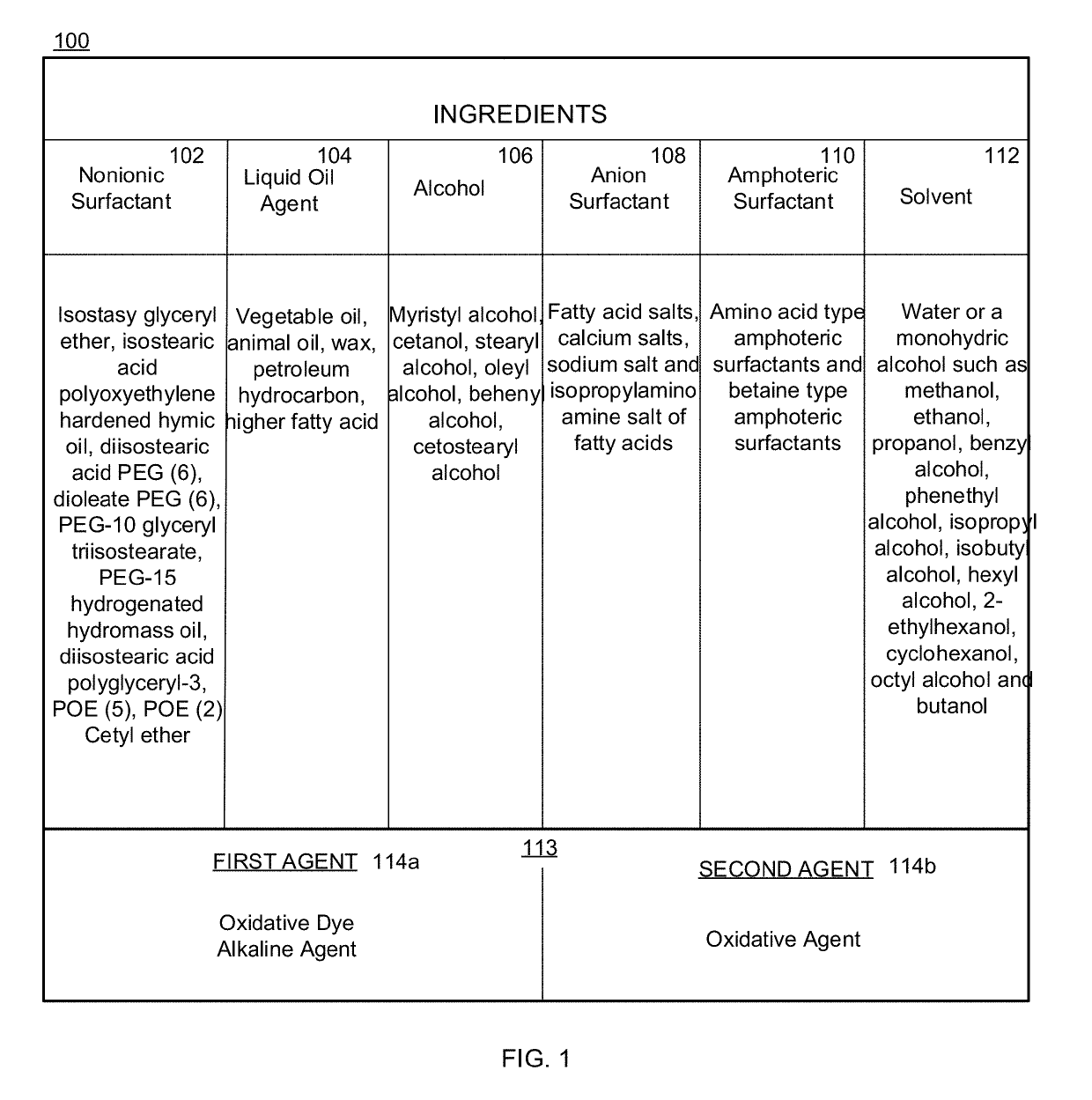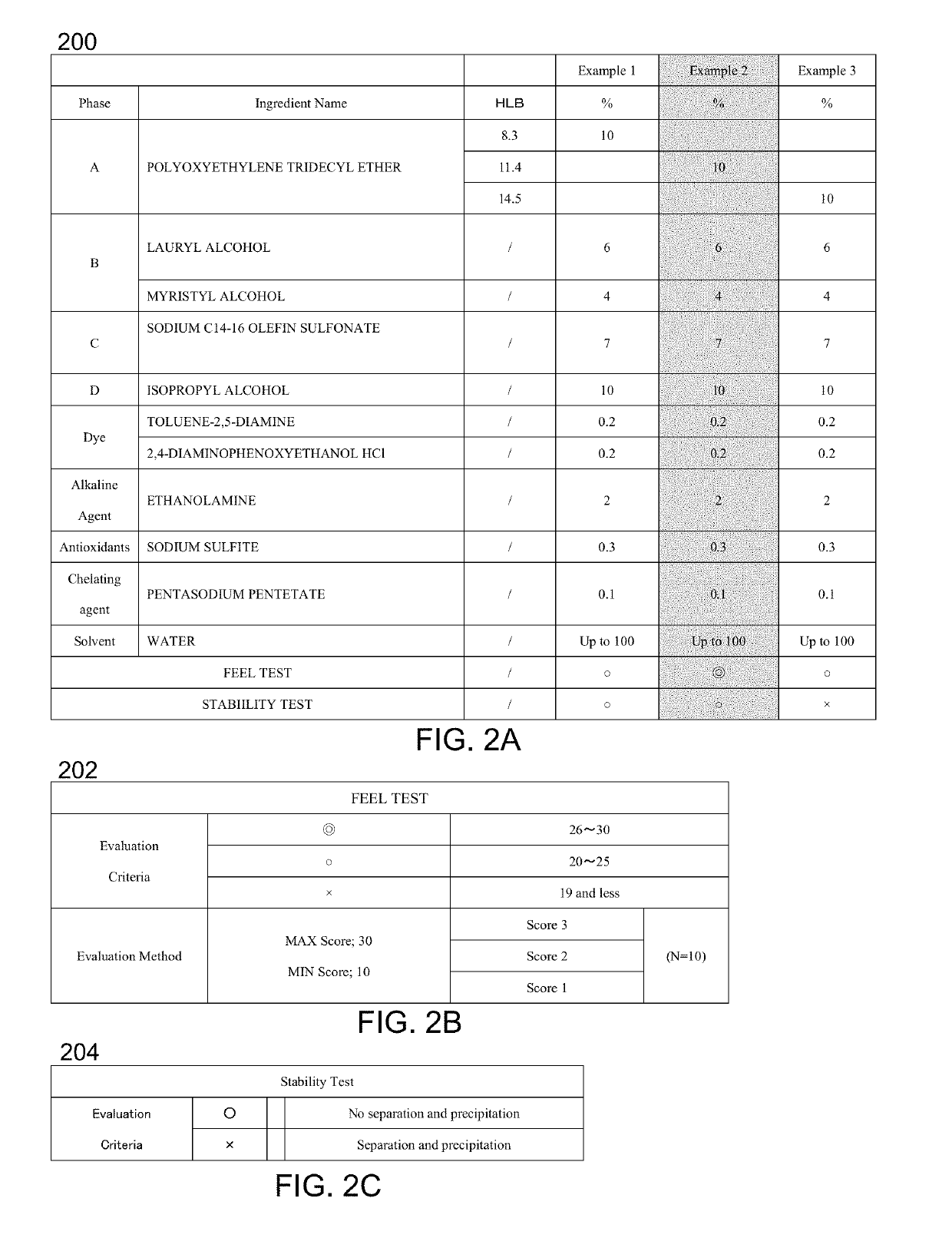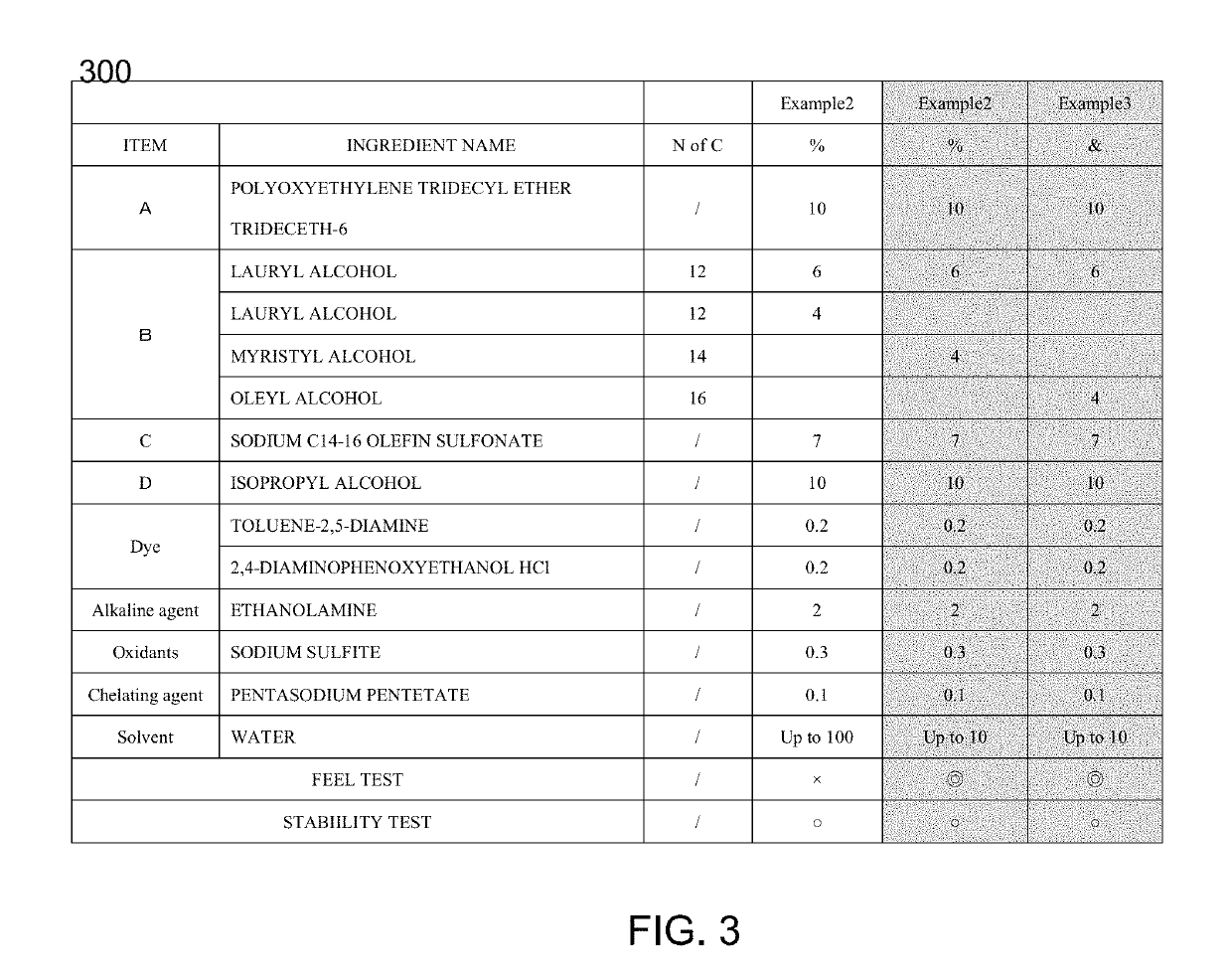Oxidative Hair Dying and Conditioning Composition and Method for Base Breaking Hair with an Oxidative Hair Dye
a technology of oxidative hair dye and composition, which is applied in the field of oxidative hair dying and conditioning composition and method of base breaking hair with an oxidative hair dye composition, can solve the problems of more pronounced problems, worsening of the touch (comb) of the hair, and difficulty in obtaining and maintaining a precise color, so as to improve the finished texture and reduce the adverse effects. , the effect of improving the textur
- Summary
- Abstract
- Description
- Claims
- Application Information
AI Technical Summary
Benefits of technology
Problems solved by technology
Method used
Image
Examples
second embodiment
[0090]Looking now at the Table in FIG. 3, an exemplary composition 300 includes the following ingredients: a polyoxyethylene tridecyl ether trideceth-6 comprising 10% by total weight of composition. The polyoxyethylene tridecyl ether trideceth-6 can be the nonionic surfactant 102 discussed above. Further, this embodiment of the composition 300 includes a lauryl alcohol having an N of C of 12, and comprising 4% or 6% by total weight of composition. This embodiment further includes a myristal alcohol having an N of C of 14, and comprising 4% by total weight of composition. Further, this embodiment of the composition 300 includes an oleyl alcohol having an N of C of 16, and comprising 4% by total weight of composition. This embodiment further includes a sodium C14-16 olefin sulfonate comprising 7% by total weight of composition. This embodiment of the composition 300 further includes an isopropyl alcohol comprising 10% by total weight of the composition.
[0091]A dye is also used in this...
fifth embodiment
[0097]This embodiment further includes examples of the composition 600 consisting of an isopropyl alcohol comprising 3.5%, 7%, and 10% by total weight of the composition. In this embodiment, the dyes is used in the composition 600 are toluene-2,5-diamine and 2,4-diaminophenoxyethanol HCl, both comprising 0.2% by total weight of the composition. The alkaline agent used in the present embodiment is ethanolamine comprising 2% by total weight of composition. The composition 600 also utilizes an antioxidant, such as sodium sulfite, that is 0.3% by total weight of the composition. The composition 600 also utilizes a chelating agent, such as pentasodium pentetate, that is 0.1% by total weight of the composition. The solvent used in this embodiment of the composition 600 is water that can have up to 100% total weight of the composition. As the Table shows, for this fifth embodiment of the composition 600, the feel test is characterizes as 27; and the stability is characterized as semi-solid...
PUM
| Property | Measurement | Unit |
|---|---|---|
| hydrophilic-lipophilic balance | aaaaa | aaaaa |
| weight | aaaaa | aaaaa |
| amphoteric | aaaaa | aaaaa |
Abstract
Description
Claims
Application Information
 Login to View More
Login to View More - R&D
- Intellectual Property
- Life Sciences
- Materials
- Tech Scout
- Unparalleled Data Quality
- Higher Quality Content
- 60% Fewer Hallucinations
Browse by: Latest US Patents, China's latest patents, Technical Efficacy Thesaurus, Application Domain, Technology Topic, Popular Technical Reports.
© 2025 PatSnap. All rights reserved.Legal|Privacy policy|Modern Slavery Act Transparency Statement|Sitemap|About US| Contact US: help@patsnap.com



